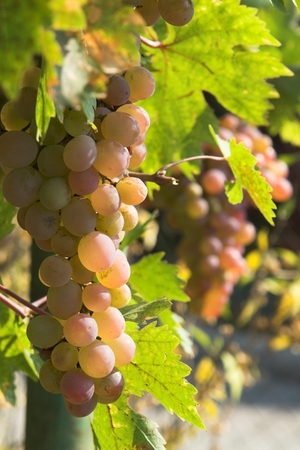We all know that Italy is the home port of all good things to eat and drink. From the king of all cheeses; Parmigiano Reggiano, to the wine of kings; Barolo, imported Italian cheeses and wines are on top of many shopping list. However with over 700 varieties of grapes grown in Italy and some 300 cheeses, it is easy to overlook many of the lesser known selections. Here is a quick bucket list of 5 unique Italian cheeses and the little known wines that compliment them. You got to try these!
Taleggio: A soft, creamy cow’s milk cheese from the Lombardy region of Italy. It’s considered a stinky cheese with a thin outer rind. The moist texture lends itself well to spreading on bread, crackers or Italian flatbreads. The one problem with Taleggio is that you cannot stop eating it. Taleggio pairs well with wines made using the Nebbioli grape like Barolos or Barbaresco. If you really want to go out on the edge try Sforzato. Sforzato uses the Nebbioli grape found in the higher regions of Lombardy, but dries them before fermenting. The sweetness of this wine matches perfectly with the softness of the Taleggio.
Grana Padano: Staying in Lombardy, which is arguable Italy’s number one region for cheese, is this hard, flaky cow’s milk creation that many who know Italian cheese consider the sister to Parmigiano Reggiano. Made in a similar style to Parmigiano Reggiano, this cheese has seen its popularity grow in recent years and is used as both a table cheese and for grating. Grana Padano is strong and fragrant and always a few dollars less per pound that Parmigiano Reggiano. A great grape variety for this cheese is Barbera d’Asti or Barbera d’Alba. Barbera is ripe on the nose with added hints of smoke, chocolate and vanilla. Barbera is found in many regions in Italy including Lombardy; it’s always wise to pair food and wines from the same region. Look for a Barbera from Lombardy’s higher elevations.
Piave: Here is a semi hard cow’s milk cheese that is excellent for grating and as a table cheese. Piave is from the Vento region, and is often found in three different styles relating to age. Look for Piave that has matured for more than 120 days as opposed to the softer varieties with less age. Piave is also compared to Parmigiano Reggiano, but tends to be nuttier. Piave shavings work well on salads and on sandwiches. Moving away from the cheese-and-wine “same region” school of thought, Piave is best served with a robust Italian red like Aglianico. Aglianicos are mostly found in the south of Italy in the region of Campania.
Formaggio Ubriaco: Formaggio Ubriaco translates literally to “Drunken Cheese.” It gets this name due to the fact that cheese makers, after the grape harvest, wrap this cheese in grape leaves. Some legends suggest that the cheese was actually fermented in wine barrels so cheese makers didn’t have to pay taxes on this product. Whatever the reason this is a truly unique cheese from Vento that goes well with fruit, especially figs, apples and other autumn delights. Go with a nice sparkling white like Prosecco from Vento. This tangy wine makes a perfect low-cost compliment to your cheese and fruit platter.
Piacentino: We could not talk Italian cheese without getting to the island of Sicily. Piacentino is made from sheep’s milk, with saffron and black peppercorns added. The saffron seems to account for its orange color; it’s a semi hard to soft cheese that you would expect to be strong but is actually mild. Piacentino can be used as a table cheese or its shaving can be added to pasta dishes, especially ravioli. Stay in Sicily for the wine pairing here and go with a selection like Nero d’Avola. A full bodied red often compared to Syrah, Nero d’Avola is Sicily’s most popular red and should not be overlooked.

